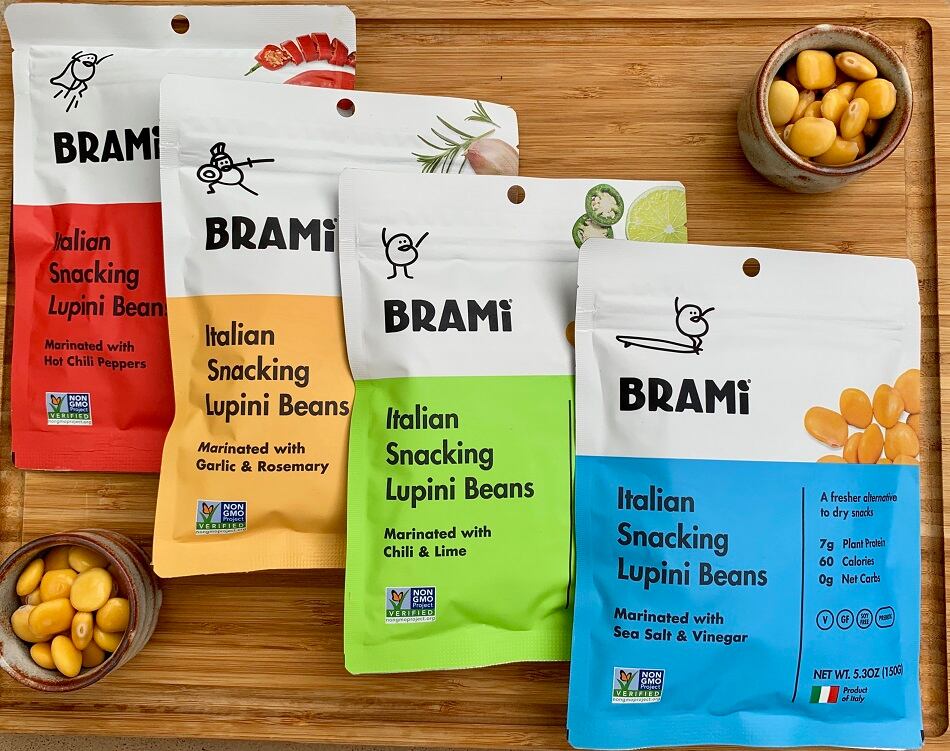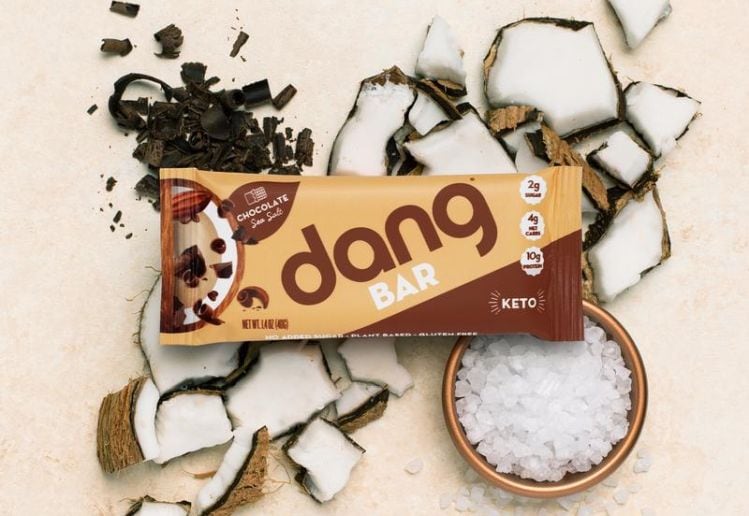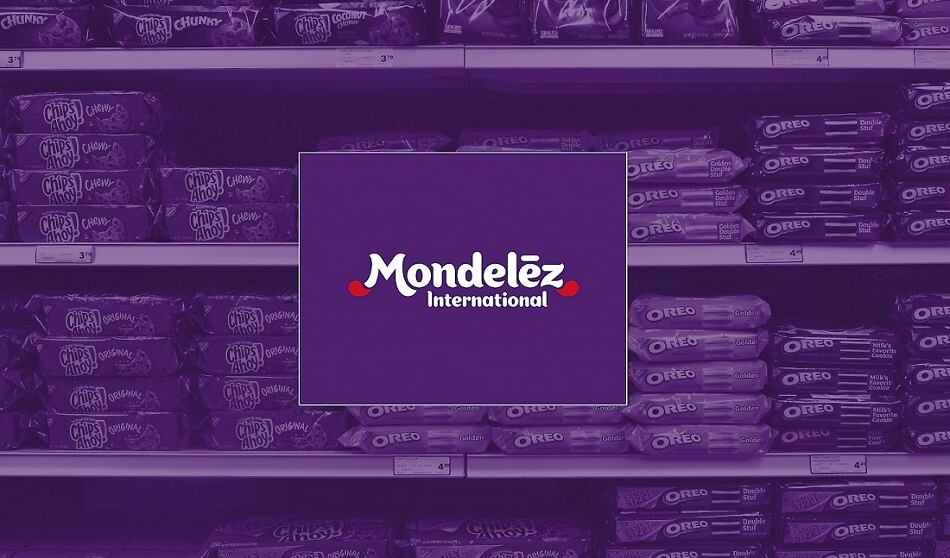When BRAMI first came onto the scene with on-the-go pouches of pickled lupini beans in different flavors, BRAMI founder Aaron Gatti knew he had an innovative product on his hands based on the lupini bean's dense macronutrient profile with 17% more protein and twice as much fiber as edamame beans (the closest product comparison, according to Gatti).
"I personally struggled with what the heck do I snack on at 4 p.m. when I’m ravenous and I need something satisfying and I don’t want to ruin my diet?," he told FoodNavigator-USA. "We discovered the lupini bean had a unique nutritional profile, with virtually no starch; it’s very dense in protein and fiber and high in minerals."
At retail, BRAMI found a home for itself in the natural and online channels where it stood out from other snack brands as an on-the-go, nutritionally dense and filling snack. At 60 calories per servings, BRAMI contains 7 grams of plant protein, 5 grams of dietary fiber, and 0 grams of net carbs.
"We weren’t just the first company to market lupini in an interesting way, but we were also the first company to introduce a shelf stable, yet fresh, pickled veggie snack to the dry grocery functional snack set," said Gatti. "The closest comparison would be olives in the pouch but those are found in the pickles and olive set and don’t really have a functional offering in terms of macronutrients the way that this does."
New manufacturing partnership unlocks growth
However, Gatti and the BRAMI team knew that an innovative idea wouldn't be enough to set the brand up for long-term success. The brand had to ensure consistent product quality and the packaging needed to educate consumers on lupini beans including how to eat them.
BRAMI was originally sourcing its beans from the Americas rather than Italy, and as a result the product wasn't the best it could be, claimed Gatti. BRAMI made the switch to sourcing its lupini beans from Italy and partnering with the country's leading manufacturer to fill and package its products.
The result has been improved taste, texture, and preservation, according to Gatti.
"When I started, I was not convinced that there was much variation in taste and quality with respect to the beans themselves. All the different beans that I was testing in the early days were either from the Americas or Australia," Gatti said. "I was not testing Italian beans at the time and it turns out that the quality of the bean and the harvesting methods are actually hugely important."
The soil composition in Italy makes for a higher mineral content and a bright golden color bean, whereas the beans grown in the Americas and Australia were more beige in color. The harvesting methods in Italy are also more meticulous, ensuring a higher quality bean at the end of harvesting and processing (including cooking and pickling the beans), according to Gatti.
"They’re very good at harvesting in Italy and they don’t break the skins nearly as much, so the beans are less damaged."
'There's no wrong way to eat BRAMI'
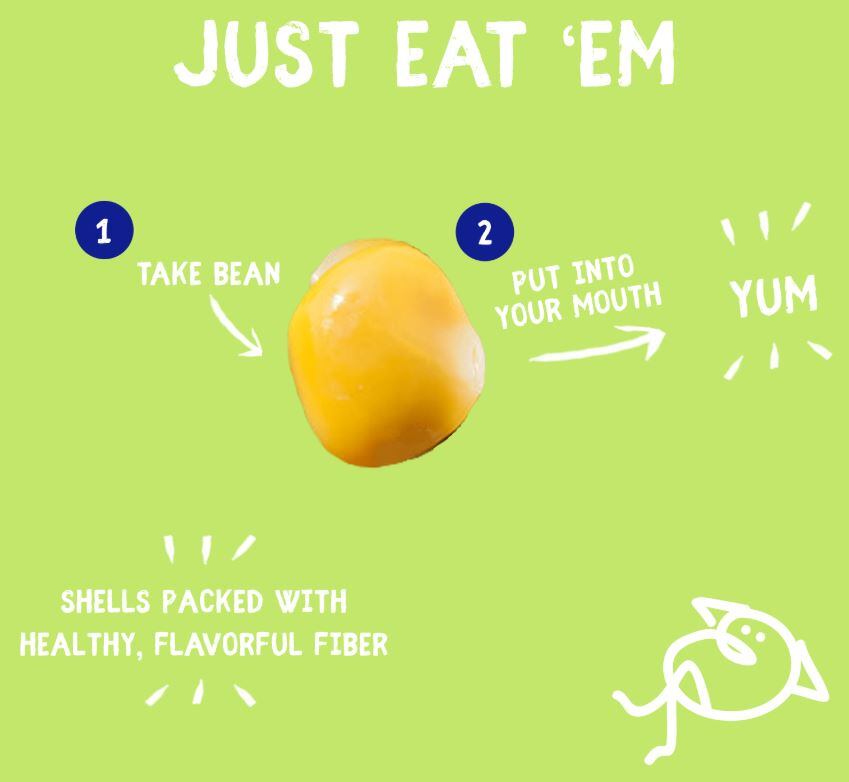
"The way that [lupini beans] are traditionally prepared, the shells are very thick and unflavorful so typically they’re eaten like a fresh pistachio almost," said Gatti.
However, BRAMI lupini beans are encased in a thin, easily digestible skin that can be eaten whole or popped off depending on consumer preference.
"You can eat the whole thing and the shell is flavorful and full of soluble and insoluble prebiotic fiber. I personally go back and forth."
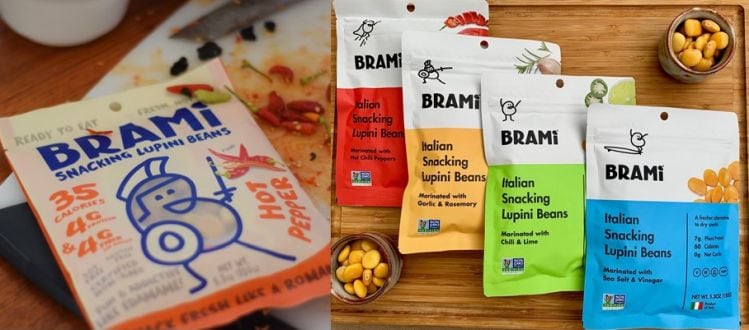
New branding: 'It was one of the most challenging projects that I've undertaken in my life'
BRAMI's first packaging was far from a flop, in fact, the brand's colorful packaging with its anthropomorphic Roman bean mascot gained a lot of brand equity with early adopters making the decision to rebrand even more difficult, said Gatti.
"It was one of the most challenging projects that I’ve undertaken in my life. We loved our old packaging and a lot of our early adopters loved it too so it was not an easy transition," he said.
"What we came to realize after two years of demoing the product and collecting data is that this is a very unique different product that requires a lot of explaining. And unfortunately, that’s not an easy position to be in as a snack. We needed more of a balance between being visually intriguing – which our old package certainly was -- and more communicative."
BRAMI's Roman bean character still holds a spot on the packaging, but plays a downsized role, making room to communicate nutrition content and emphasise the 'snacking concept'.
With these changes, BRAMI has already started to see immediate improvements in online customer reviews.
"The freshness, preservation and branding is way stronger than before. It’s going to take time for that to filter through to retail, but we’ve seen already a jump in our online reviews and ratings," Gatti said.
A move into conventional with snack-sized offerings
BRAMI has grown an average of 75% in dollar sales over the past two years and is in the top quartile of the natural snacks/other category in terms of dollar placement, according to SPINS.
"Natural is an obvious fit for us but we are starting to talk to retailers in conventional and elsewhere. We’re in Ahold, including Stop and Shop, as well as Shaw's in select Safeway banner stores," Gatti said.
BRAMI launched an individual 2.3-ounce serving to complement its original multi-serve product, which Gatti believes will help it penetrate a larger consumer audience.
"It opens up the grab and go snack category opportunity for us at a better price point than the traditional multi-serve," he said.

